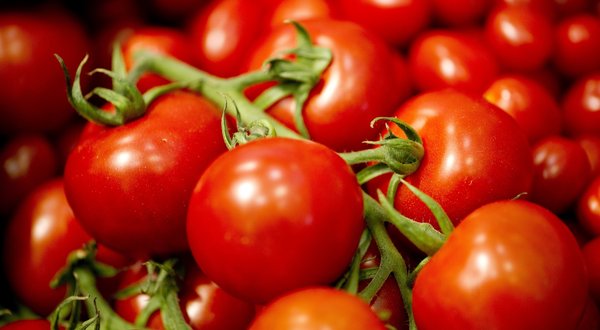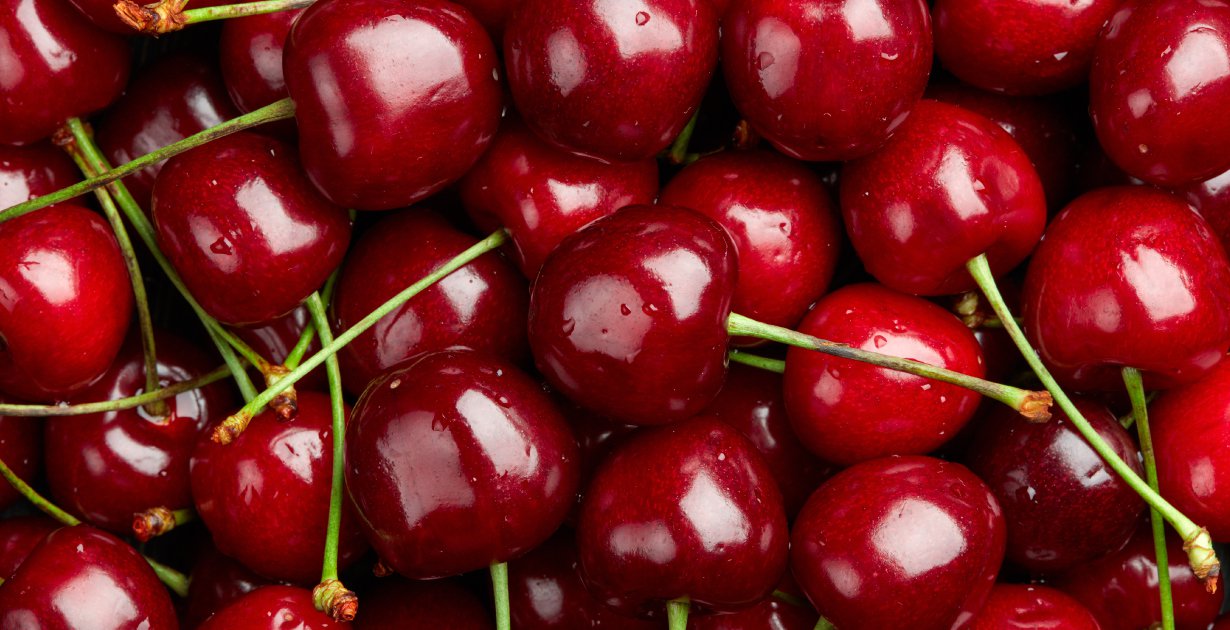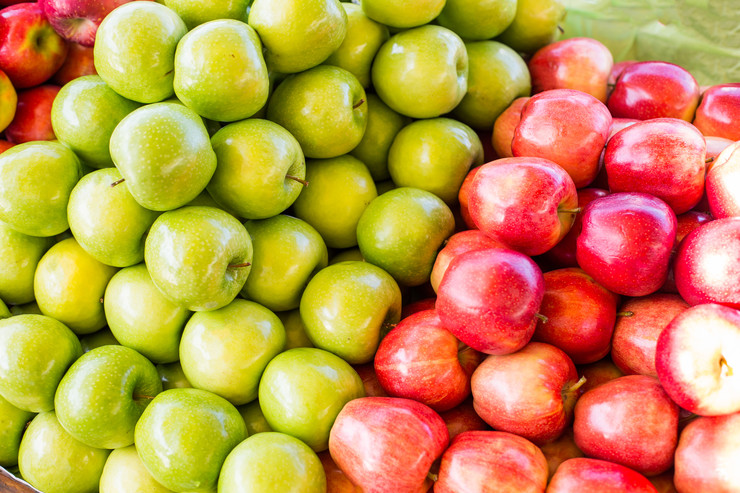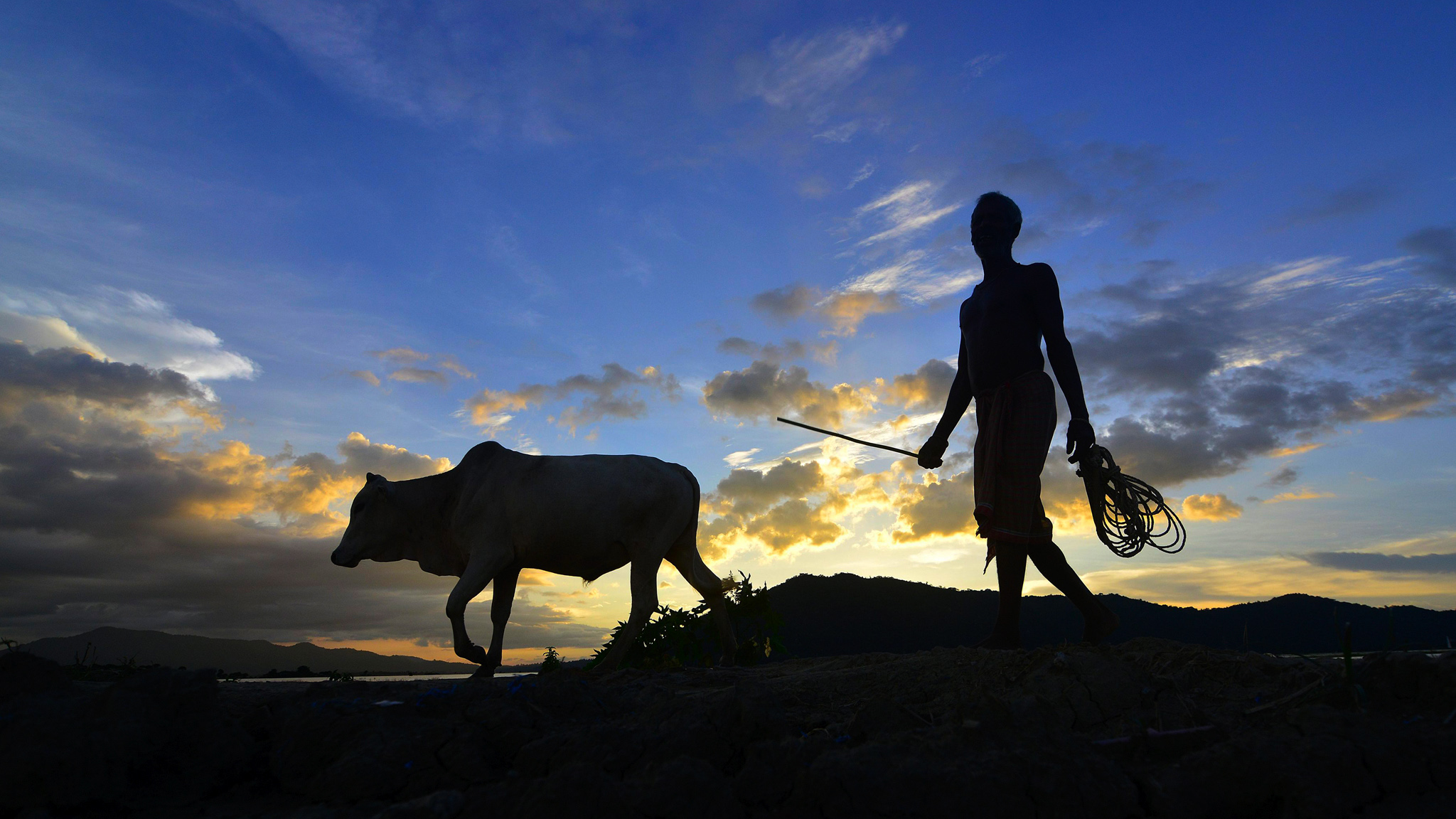Worldwide experience in crop insurance
Long-term crop insurance is operated across more than 200 million hectares of agricultural land around the world. For more than 35 years, valuable experience has been gathered on this crop insurance system. Munich Re has filtered out the characteristics of the system which are responsible for its long-term success and defined them as a 'best practice' for crop insurance.
SystemAgro:
The framework is provided by a public private partnership designed on insurance principles. All insurance-related conditions which are important for securing the growing of agricultural crops are governed by laws and regulations. These are, for example: access to insurance, covering the insurance requirement at reasonable premiums or transparency of insurance conditions and claims handling.
Climate change as a real challenge
Our world is facing a number of serious problems: financial crisis, climate change and security of food and energy supplies are among the most important.
Agriculture is particularly hard hit by these problems, as it has always been - and will be even more so in the future - at the centre of the tense triangle formed by the climate, the financial markets and security of food and energy supplies.
The low global stocks of agricultural raw materials, especially grain (at the end of 2008, international grain stocks were only enough for 2 months), mean that agricultural production needs to make a huge contribution to improving the situation in the global energy and nutrition sector. The increase in the world's population by around 3 billion people by 2050 will increase demand for agricultural raw materials and will also force a change in eating habits.
The problem is exacerbated further by the trend towards reducing usable agricultural space and the increased use of agricultural materials for energy generation.
The fact that it has become more difficult to obtain credit as a result of the financial crash is hitting agriculture with its long financial cycles (from sowing through to harvesting) particularly hard.Even when the financial crisis is over in 3 to 4 years' time, global fears about food security because of price instability and the delicate balance between supply and demand are set to remain in place. Government and private investment into agriculture which is secure in the long term therefore needs to be reinforced.
All the more so as agricultural production is directly subjected to climatic conditions, and especially to the rigours of adverse weather conditions.
In the past, Europe's farms have been blessed with two important resources: fertile soil and sufficient water. But supplies of both are getting shorter.
For example, the 2003 drought damaged German agriculture to the tune of around 1.3 billion Euros. The farms affected had to bear the brunt of the damages themselves, as the government's ad-hoc payments were very low: according to the German Farmers Association, they amounted to 72 million euros, less than 6 % of the actual damage. Crop insurance based on public private partnership does not yet exist in Germany.
The "natural" compensation of increased prices in the event of a bad harvest (supply and demand) reduced the extent of the damage for many farmers in 2003, as the prices of agricultural produce increased. However, since the development of prices in 2008 at the latest, it has been known that a poor harvest can no longer necessarily be compensated for by higher product pricesfor what are scarcer quantities of agricultural production. After all, it is increasingly factors which bear no relation to regional crop volumes which are influencing increased price volatility.
The situation in Poland in 2006 was similar to that in Germany in 2003. The extreme drought in the spring and summer caused damage to the farming industry of around 600 - 700 million Euros. The ad-hoc compensation payments provided by the Polish government represented just a fraction of the actual financial losses. As a result, the Polish government pressed ahead with securing against natural risks in the form of crop insurance worked out in conjunction with farming associations, the insurance industry and universities.
This is based on a law to promote agricultural insurance which was passed in 2006. The law proposes subsidising crop insurance premiums by up to 50 % and other fundamental regulations for government involvement in crop insurance in the form of a public private partnership.
As a result of increasing specialisation in production, the influence of natural risks on production results in agricultural cultures has increased still further. The changing climate has reinforced the influence even more. There are numerous scientific studies which have provided evidence that the changing climate around the world is already having an impact in the form of increased and increasingly intense extremes of weather. This applies to heavy precipitation, periods of heat and drought and storms, among other things.
For other extremes of weather and the damage caused by them, global quantification of the influence of climate change is more difficult, although it is already possible in some areas. There is evidence that events which are associated with major thunderstorms - such as hail and cloudbursts - are on the up. These increases have been observed, for example, in the USA to the east of the Rocky Mountains, in the south of Germany and in Switzerland.
The year 2009 seems to underline this trend. In Germany, the hail insurance companies based in Bavaria have been faced with high levels of claims the likes of which they last experienced in 1993. Enormous hail damage has been recorded in Switzerland. What is striking in both countries is that a few powerful hailstorms have made up a significant proportion of the overall loss burden.
In the state of Iowa in the USA, a single hailstorm in 2009 caused over 50 million US dollars of damage to agricultural crops.
Current measurements prove that climate change is happening and has accelerated over recent years.
- Over the last 100 years, the global temperature has increased by 0.7 °C, and as much as 1.1 °C in Germany and even 1.5 °C in the Alps region.
- The surface temperatures of the sea in the areas in which tropical storms are generated have increased by 0.5 °C since the early 1970s as a result of climate change.
It becomes clear that global warming since the beginning of the age of industrialisation (1750) has largely been caused by the anthropogenic emission of greenhouse gases and only to a lesser extent by natural factors (intensity of the sun).
The increasing influence of climate change on extremes of weather and the resulting damage caused can also be seen in agricultural production and insurance in the increasing exposure to late spring frosts. For example, a project on climate change in the fruit-farming sector in Germany revealed that the risk of late spring frosts had significantly increased for a number of varieties of fruit. This is down to the fact that blossoming is beginning earlier thanks to shorter and milder winters. As the frost period and especially the date of the last spring frost has not got earlier in the same way, the risk of frost damage has increased. In the major fruit-growing areas of Germany, they are reckoning on a sixfold increase in the late frost risk for cherries and a twofold increase for apples. Frost while the trees are in blossom is among the most dangerous weather events in the fruit-farming industry, as in extreme cases it can destroy the entire crop of one year.
Further analysis is required in order to determine the influence of climate change on the trends in terms of damage from natural disasters. For agricultural production and insurance, the investigations will focus on:
- Regional differentiation of changes in claims- Changes in claim distribution- Investigation of potential new claim scenarios
The increasing intensification - as a result of technology and specialisation - and the resulting increase in demand for investment and outside capital in agricultural production mean that the safety net for the farmer already needs to be made tighter. Agricultural insurance - which is one of the best informed sectors of the insurance industry when it comes to exposure to natural hazards - can play an active role because it is not at the very beginning of the learning curve.
Higher risk premiums as a result of the costs of disaster claims which have increased and can be expected to increase further can only be handled with a professional approach by all parties affected by the risk.
This can be called a "Public Private Climate Partnership" in the broader sense. The essential aim of SystemAgro is to give the farmer access to an intelligent management instrument in order to strengthen his business on his own initiative and his own responsibility.
The 4 pillars of SystemAgro
The 4 pillars, also known as the BLOC, all carry equal weight. If one pillar fails, this jeopardises the stability of the system as a whole. The pillars therefore need to be anchored by government regulations in the shape of laws and ordinances. However, the concrete arrangement of the columns is flexible.
SystemAgro only works as an agricultural policy control instrument if the existing structure of the agricultural and insurance industry is taken into consideration.
B - Backing: Subsidies for insurance premiums
B ... is the foundation for taking out insurance policies and has already been introduced in most markets.
By subsidising the premiums, the government lays the foundations for buying an insurance policy. Without premium subsidies, the insurance premiums for comprehensive crop insurance are virtually prohibitive and/or the deductibles demanded of the farmers are so high that compensation payments are only very rarely made.
This is because of the short return periods of agricultural loss events as compared to, for example, those in fire insurance. The geographical extent of the damage caused by, for example, a drought, is also greater than in other sectors of industry. As a result, the premiums are very high.
Italy 2009: Collapse of the crop insurance market. The premiums for crop insurance for specialist crops such as vines, fruit or vegetables are up to 20 % of the sums insured in Italy. Farmers can only afford adequate insurance with deductibles of 10-30 % of the sum insured with government subsidies of up to 80 % of the premium. As the Italian government had not yet reached a decision on the level of premium subsidies by the beginning of the 2009 risk period, farmers this year insured considerably less areas and crops against natural hazards (especially frost). Instead of subsidising premiums by up to 80 % as in 2008, the current discussions are focusing on a figure of around 40-60 %.
Current estimates suggest a downturn in the market premium by about 20 %, which corresponds to about 50 million euros. This example shows that farmers only take out crop insurance when the government provides substantial premium subsidies.
Premium subsidies which are approved in the long term are a vital prerequisite for the stability and sustainability of a crop insurance system. These should be a reliable and permanent element of the government budget, as in the USA, and consolidated in an agricultural insurance act. This is the basis for economic calculations both for the insurers and for the farmers. This also means the government can budget its expenditure on crop insurance in the long term.
A government acts wisely by pursuing an integrated agricultural policy and linking premium subsidies to other tools. In the USA, for example, taking out crop insurance is a prerequisite for taking part in other government-sponsored programmes in the risk management sector.
L – Loss Sharing: Financial state support for insured catastrophe losses
L ... Government involvement in insured disaster claims stabilises the system over time and makes private risk capital available.
As a rule, the government has a public disaster aid fund which can be used on an ad hoc basis. This comes into play most often for large-scale damage caused by drought, floods and frost.
High levels of insurance take-up can only be achieved if crop insurance is the method of choice - with no competing disaster aid. In systems which are still in the development phase, it is a real challenge for the government to integrate existing ad hoc aid into SystemAgro.
The benefit of crop insurance over ad hoc aid is that the farmer has a legal entitlement to compensation payments in the event of a disaster and the government can use the infrastructure and the risk capital of the insurance industry. This means distribution is not just on the "watering can principle", instead, the individual damage sustained by the farmer can be calculated and the compensation paid when the farmer needs it most.
The example of the major flood of 1993 in the Midwest shows how loss sharing between the insurance industry and the government stems insured disaster damages and is crucial for the stability and sustainability of a crop insurance system. In summer 1993, following extreme levels of precipitation, the Missouri and the Mississippi and their tributaries broke their banks and caused enormous damage to agricultural crops. In Minnesota alone, the damage amounted to 360 million US dollars which the insurance companies had to pay out to the farmers. Without government involvement in these compensation payments, the crop insurers in Minnesota would have had to pay out six times the revenues they had received in 1993. This extreme year alone would have taken the loss cost over a period of 20 years to 20 % above its actual level.
The farmers would therefore have faced extraordinarily high increases in premiums. If the premiums had not been increased, access to private risk capital would have dried up. All this as the result of a single loss event.
As a result of sharing the loss between the government and the insurance companies, crop insurance can continue to be available, even after years of extremely high loss ratios. This means that, if the level of cover is high, crop insurance remains a very consistent and therefore plannable cost factor.
In this respect, what were the consequences of the major drought in South America in 2008/2009? The extremely long, intensive dry period caused damage of around 3.8 billion euros to agricultural crops in Argentina alone. As in the neighbouring countries of Uruguay and Paraguay, which were also affected, the crop insurance companies in Argentina were forced to pay out more than five times as much in compensation as they had received from the farmers in premiums. It was only because of the poor market penetration of crop insurance and its relatively low standing in the insurers' portfolios that there was no major crisis in the entire crop and hail insurance market. As the demand for crop insurance is set to increase in Argentina, this development needs to go hand in hand with risk sharing between the government and the insurance industry because of the high potential for damages as a result of drought.
O – Open: Access for all farmers
O ... all the framework conditions include all agricultural operations.
All farmers are beneficiaries of the financial support of the government. This is achieved by designing an open crop insurance system. This means that all farmers wishing to take out insurance must be registered with the system. This means that SystemAgro can contribute to substantial market penetration and makes it an efficient agricultural policy control instrument.
In the USA, market penetration has reached more than 80 % of land area. This shows that by specifically controlling transfer payments into the crop insurance system, the government can achieve high levels of acceptance among farmers. All natural hazards which could significantly reduce the yield of American farmers are bundled onto a multi-risk package to guarantee comprehensive insurance for the individual farmer. Besides premium subsidies and government involvement in disaster payments, the stability and sustainability of the insurance systems can be ensured by balancing out different insured perils on a regional basis. With the so-called MPCI (multiperil crop insurance), fruit farmers in California facing high risks of frost, wheat farmers in Kansas facing high risks of drought and corn farmers in the Midwest facing high risks of hail can all be insured. Insurance premiums are still affordable for US-American farmers and the average coverage level is high at 70 - 75 % of the historical average yield.
C – Central and uniform: Central structure and uniform insurance conditions
C ... The central structure is a prerequisite for the transparency and efficiency of a crop insurance system.
On many occasions in the past, approaches to crop insurance systems have been implemented and supported with premium subsidies, only to be discontinued just a few years later because of insufficient premium rates and high loss ratios. These attempts not only failed in the objective of setting up a sustainable risk management system, but also swallowed government funds with no benefit in the medium term. Experience shows that risk-commensurate premiums are enormously important given the frequency and wide scale of yield losses and that competition on premiums severely jeopardises the chances of survival of a newly launched crop insurance scheme.
Uniform insurance conditions including premiums, deductibles and guidelines for sales and loss adjustment are indispensable for the development of sustainable crop insurance systems for two reasons:
1. Only risk-commensurate premiums allow risk carriers to shoulder losses incurred. Otherwise the system collapses.
2. The government has a legitimate interest in the funds it provides (premium subsidies, loss sharing, development and administration expenses) being put to the long-term use of the farmer and/or the agricultural industry. The main priority is on transparency and efficiency when it comes to the use of government funds.
In order to implement uniform conditions for all those involved, monitor these and adapt them as the system evolves, a crop insurance system based on SystemAgro needs to have a central structure. Its most important functions are:
1. Implementation legal regulations2. Implementation and continuous adjustment of uniform conditions for the operation of SystemAgro3. Licensing of the insurers involved4. Monitoring of the use of government resources (premium subsidies, loss sharing)5. Increased efficiency
This central structure can be adapted to suit the regional circumstances.
In the USA, for example, the RMA, a division of the Agriculture Ministry, guarantees uniform guidelines with respect to premiums, products, insurance conditions and loss adjustment. Among other things, it has defined premium rates for each crop, region and product which are binding for all insurance companies. The insurance companies are regularly audited on all the processes.
As soon as adjustments to the crop insurance system are required, these are issued by the RMA on a central basis. At the same time, all crop insurance companies must fulfil minimum standards set out by the RMA.
These include, for example, guidelines relating to minimum risk capital levels or risk transfer. Only insurers who meet these standards are granted a sales licence and are authorised to offer subsidised premium rates.
If a crop insurance system is operated by means of a pool, this takes on the role of the central structure. In Spain, insurance companies pool their policies in the Agroseguro insurance pool. Agroseguro collects the premiums for the participating companies and, in conjunction with ENESA, a subdivision of the Agriculture Ministry, controls all important insurance processes. These include product development, definition of insurance conditions and sums insured for the different crops as well as loss adjustment.
The Turkish equivalent, the insurance pool Tarsim, has also centralised the principles of loss adjustment alongside all other important processes. The use of external loss adjusters is controlled by the pool. Even before Tarsim was set up, claims handling was controlled by a central company for all companies in the market. When Tarsim was founded, this company was integrated into the pool.
In the USA, Spain and Turkey, the creation of a central insurance unit for farmers, the government and the insurance industry has resulted in a uniformly transparent structure which works cost-effectively and powerfully in the interest of all parties involved.
Uniform conditions and a central structure cannot replace the insurance industry, which takes on the role of risk carrier, fulfils the important functions of sales, processing and customer service and works with the central structure to initiate product and process improvements.
It is all about the right cover
Only if farmers are offered a tool for individual risk management can the crop insurance system be sustainable and lead to a high level of insurance take-up.
There are essentially two different cover systems:
1. Individual yield cover2. Regional index insurance based on one or more weather parameters
The different ways in which the two cover systems work can be demonstrated based on cover levels, price modelling and loss calculation.
Index insurance is priced according to a meteorological yield model. If this is simply designed, it means that a few simple weather parameters such as precipitation and temperature are simply correlated with a loss potential, which means there is a high risk of the farmer suffering losses without the index insurance kicking in.
Arable production can only be approximately understood and predicted based on complex models. A huge volume of extremely accurate input data is required, which makes this an expensive option in practice. To date, models which are sufficiently accurate have only been produced on a very small scale and require large amounts of measurement. Therefore there are strict limits on individual cover for farmers at risk-commensurate premium rates based on index insurance.
At the same time, experience in designing and pricing index insurance cannot easily be transferred between different regions and crops.
India, May 2009: Cyclone Aila devastated fields across large swathes of Eastern India. Damage sustained by the farms affected was considerable. Those who had taken out index insurance were hoping for compensation payments. However, the cyclone did not meet the defined precipitation thresholds which would have led to a compensation payment. As that index product was only based on a volume of precipitation, the majority of the damage - caused by the storm and the flooding - was not covered. This example shows that index insurance based on simple models is not suitable for predicting complex effect mechanisms because of the low level of correlation with the individual damage sustained by the farmer. For this reason and because of the fact that of a total of 75 million euros in damage to agriculture only 10,000 euros was compensated for through index insurance, the Indian government is now considering introducing a system based on individual yield cover.
Only individual yield cover offers the farmer what he expects. Reliable, sufficient compensation in the event of a claim. This leads to high levels of acceptance.
In addition to regional risk information, the farmer's historical yield record is used as the basis for pricing and product design. The level of data collection required is reasonable. If the farmer achieved a low average yield over the previous years, he will be insured based on the low statistical yield expectation.
However, if the farmer's yield has been good in recent years, the level of yield for the year insured is also expected to be high.
Index insurance based on a simple model may offer the advantage of quicker loss calculation because the data available can be quickly evaluated with respect to whether a defined threshold value has been reached. However, the benefit of index insurance relative to loss adjustment is outweighed by the disadvantage that the the cost of procurement, quality assurance and evaluation of the data for a sufficiently realistic model is too high.
In the future, crop insurance will be able to use state-of-the-art technology in order to keep the work involved in determining the yield and thus adjusting the loss on the one hand, and to make sure the system is objective and not open to manipulation on the other. During this process, locally obtained yield data are used to calibrate remote sensing data. These remote sensing data are based on geo-coordinates and can project local differences in yield onto geographical spaces.
SystemAgro - the success factors at a glance
Overall, what sets SystemAgro apart is five success factors:
Stable:
SystemAgro is provably sustainable for the entire agricultural industry. SystemAgro also creates added value for upstream and downstream businesses.
Tailor-made:
SystemAgro is a flexible agricultural policy instrument which is tailored to the individual risk management of the farmer and can be integrated into the individual agricultural policy of any country. SystemAgro also takes into consideration the existing structure of the insurance industry.
All farmers:
SystemAgro allows all farmers to insure themselves - irrespective of the exposure of their farm or the crops they produce.
Rated:
SystemAgro ensures the farmer's solvency. This means he can not only spend money on the inputs he needs, but also has the financial resources for the business investments for the future, such as new agricultural machinery or buildings and equipment. The farmer's stable income improves his credit rating, making it easier for him to borrow money from the banks.
Transparent:
SystemAgro is organised on a central basis. This gives both the government and the farmer an insight into the use of the subsidies and into the system for calculating premiums.
The success of SystemAgro's integrated approach lies in the fact that all those involved in the public private partnership can derive real benefit from the system:
- The farmer gets a professional management tool to secure his individual risk situation.
- The insurance company makes a commitment in the long term with a view to achieving profitable results over time.
- The government gets a stable agricultural industry and at the same time gets help in overcoming the challenges posed by climate change through a public private climate partnership.
SystemAgro is a win-win-win situation.













